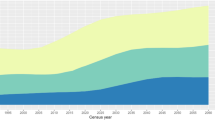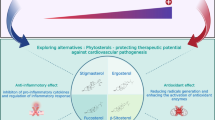Abstract
Background
The formation and accumulation of advanced glycation end products (AGEs) increase in some lifestyle-related diseases as well as in aging; however, little is known about the relationship between food-derived AGEs and the pathology of such diseases.
Aim of the study and methods
To explore whether food items containing high levels of AGEs are involved in the development of lifestyle-related diseases, rats were orally administered a commercial high-AGE beverage [Lactobacillus beverage-A (LB-A)]. With a particular focus on angiogenesis-associated diseases, the gene expressions of vascular endothelial growth factor (VEGF) and the receptor for AGEs (RAGE) were examined in the liver and kidneys using real-time reverse transcription-polymerase chain reaction. Moreover, AGE deposition was immunohistochemically investigated in these tissues.
Results and conclusions
Hepatic VEGF expression was significantly increased in rats administered LB-A (P < 0.01 vs. control). Furthermore, immunohistochemical analysis detected glucose-derived AGE-positive cells in the liver from the LB-A group. These results suggest that AGE-rich beverages increase hepatic VEGF expression and AGE accumulation, bringing about early events associated with lifestyle-related diseases.


Similar content being viewed by others
References
Ahmed N (2005) Advanced glycation endproducts-role in pathology of diabetic complications. Diabetes Res Clin Pract 67:3–21
Adams LA, Sanderson S, Lindor KD, Angulo P (2005) The histological course of nonalcoholic fatty liver disease: a longitudinal study of 103 patients with sequential liver biopsies. J Hepatol 42:132–138
El-Serag HB, Tran T, Everhart JE (2004) Diabetes increases the risk of chronic liver disease and hepatocellular carcinoma. Gastroenterology 126: 460–468
Fehrenbach H, Weiskirchen R, Kasper M, Gressner AM (2001) Up-regulated expression of the receptor for advanced glycation end products in cultured rat hepatic stellate cells during transdifferentiation to myofibroblasts. Hepatology 34:943–952
Goldberg T, Cai W, Peppa M, Dardaine V, Baliga BS, Uribarri J, Vlassara H (2004) Advanced glycoxidation end products in commonly consumed foods. J Am Diet Assoc 104:1287–1291
Hoeben A, Landuyt B, Highley MS, Wildiers H, Van Oosterom AT, De Bruijn EA (2004) Vascular endothelial growth factor and angiogenesis. Pharmacol Rev 56:549–580
Kitajima S, Liu E, Morimoto M, Koike T, Yu Y, Watanabe T, Imagawa S, Fan J (2005) Transgenic rabbits with increased VEGF expression develop hemangiomas in the liver: a new model for Kasabach–Merritt syndrome. Lab Invest 85:1517–1527
Koschinsky T, He CJ, Mitsuhashi T, Bucala R, Liu C, Buenting C, Heitmann K, Vlassara H (1997) Orally absorbed reactive glycation products (glycotoxins): an environmental risk factor in diabetic nephropathy. Proc Natl Acad Sci USA 94:6474–6479
Lin RY, Reis ED, Dore AT, Lu M, Ghodsi N, Fallon JT, Fisher EA, Vlassara H (2002) Lowering of dietary advanced glycation endproducts (AGE) reduces neointimal formation after arterial injury in genetically hypercholesterolemic mice. Atherosclerosis 163:303–311
Lin RY, Choudhury RP, Cai W, Lu M, Fallon JT, Fisher EA, Vlassara H (2003) Dietary glycotoxins promote diabetic atherosclerosis in apolipoprotein E-deficient mice. Atherosclerosis 168: 213–220
Ljungberg M, Korpela R, Ilonen J, Ludvigsson J, Vaarala O (2006) Probiotics for the prevention of beta cell autoimmunity in children at genetic risk of type 1 diabetes–the PRODIA study. Ann N Y Acad Sci 1079:360–364
Mise M, Arii S, Higashituji H, Furutani M, Niwano M, Harada T, Ishigami S, Toda Y, Nakayama H, Fukumoto M, Fujita J, Imamura M (1996) Clinical significance of vascular endothelial growth factor and basic fibroblast growth factor gene expression in liver tumor. Hepatology 23:455–464
Pertynska-Marczewska M, Kiriakidis S, Wait R, Beech J, Feldmann M, Paleolog EM (2004) Advanced glycation end products upregulate angiogenic and pro-inflammatory cytokine production in human monocyte/macrophages. Cytokine 28:35–47
Resta-Lenert S, Barrett KE (2006) Probiotics and commensals reverse TNF-alpha- and IFN-gamma-induced dysfunction in human intestinal epithelial cells. Gastroenterology 130:731–746
Rafter J, Bennett M, Caderni G, Clune Y, Hughes R, Karlsson PC, Klinder A, O’Riordan M, O’Sullivan GC, Pool-Zobel B, Rechkemmer G, Roller M, Rowland I, Salvadori M, Thijs H, Van Loo J, Watzl B, Collins JK (2007) Dietary synbiotics reduce cancer risk factors in polypectomized and colon cancer patients. Am J Clin Nutr 85:488–496
Sato T, Iwaki M, Shimogaito N, Wu X, Yamagishi S, Takeuchi M (2006) TAGE (Toxic AGEs) theory in diabetic complications. Curr Mol Med 6:351–358
Smedsrød B, Melkko J, Araki N, Sano H, Horiuchi S (1997) Advanced glycation end products are eliminated by scavenger-receptor-mediated endocytosis in hepatic sinusoidal Kupffer and endothelial cells. Biochem J 322:567–573
Takeuchi M, Makita Z, Yanagisawa K, Kameda Y, Koike T (1999) Detection of noncarboxymethyllysine and carboxymethyllysine advanced glycation end products (AGE) in serum of diabetic patients. Mol Med 5:393–405
Takeuchi M, Makita Z, Bucala R, Suzuki T, Koike T, Kameda Y (2000) Immunological evidence that non-carboxymethyllysine advanced glycation end products are produced from short chain sugars and dicarbonyl compounds in vivo. Mol Med 6:114–125
Treins C, Giorgetti-Peraldi S, Murdaca J, Van Obberghen E (2001) Regulation of vascular endothelial growth factor expression by advanced glycation end products. J Biol Chem 276:43836–43841
Vlassara H, Cai W, Crandall J, Goldberg T, Oberstein R, Dardaine V, Peppa M, Rayfield EJ (2002) Inflammatory mediators are induced by dietary glycotoxins, a major risk factor for diabetic angiopathy. Proc Natl Acad Sci USA 99:15596–15601
Yamagishi S, Inagaki Y, Okamoto T, Amano S, Koga K, Takeuchi M, Makita Z (2002) Advanced glycation end product-induced apoptosis and overexpression of vascular endothelial growth factor and monocyte chemoattractant protein-1 in human cultured mesangial cells. J Biol Chem 277: 20309–20315
Yamagishi S, Amano S, Inagaki Y, Okamoto T, Koga K, Sasaki N, Yamamoto H, Takeuchi M, Makita Z (2002) Advanced glycation end products-induced apoptosis and overexpression of vascular endothelial growth factor in bovine retinal pericytes. Biochem Biophys Res Commun 290: 973–978
Yoshiji H, Kuriyama S, Yoshii J, Ikenaka Y, Noguchi R, Hicklin DJ, Wu Y, Yanase K, Namisaki T, Yamazaki M, Tsujinoue H, Imazu H, Masaki T, Fukui H (2003) Vascular endothelial growth factor and receptor interaction is a prerequisite for murine hepatic fibrogenesis. Gut 52:1347–1354
Yadav H, Jain S, Sinha PR (2007) Antidiabetic effect of probiotic dahi containing Lactobacillus acidophilus and Lactobacillus casei in high fructose fed rats. Nutrition 23:62–68
Zareie M, Johnson-Henry K, Jury J, Yang PC, Ngan BY, McKay DM, Soderholm JD, Perdue MH, Sherman PM (2006) Probiotics prevent bacterial translocation and improve intestinal barrier function in rats following chronic psychological stress. Gut 55: 1553–1560
Acknowledgments
This work was supported in part by a grant from the Japan Society for the Promotion of Science (Grant-in-Aid for Scientific Research [B], #19300254) to Masayoshi Takeuchi and by the Specific Research Fund of Hokuriku University (category B, code No. 230007, FY2007) to Takashi Sato and Masayoshi Takeuchi.
Author information
Authors and Affiliations
Corresponding author
Rights and permissions
About this article
Cite this article
Sato, T., Wu, X., Shimogaito, N. et al. Effects of high-AGE beverage on RAGE and VEGF expressions in the liver and kidneys. Eur J Nutr 48, 6–11 (2009). https://doi.org/10.1007/s00394-008-0753-4
Received:
Accepted:
Published:
Issue Date:
DOI: https://doi.org/10.1007/s00394-008-0753-4




